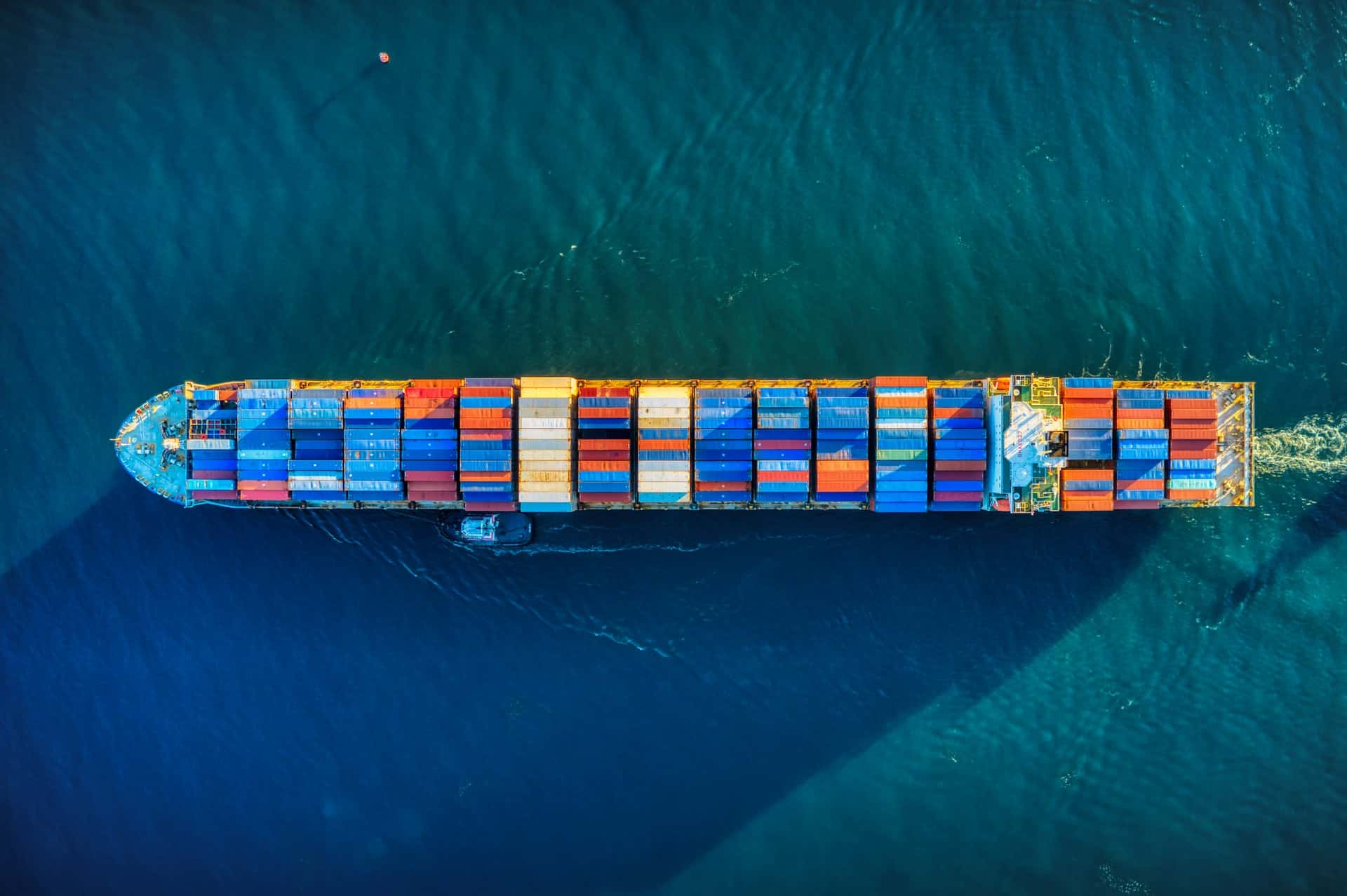Member companies of the British Association of Removers normally use an association called the Movers Trading Club Ltd (MTC) to provide their ocean freight services. Paul Felton, the Commercial Manager of the Movers Trading Club Ltd, has given an update into the current shipping market, which is as follows.
The MTC provides its members, which are moving companies, access to ocean freight rate agreements that are based on a 12-month validity. This allows moving companies to quote and book freight to destinations around the world for their customers. These MTC agreements run from the 1st of March through to the end of February of the following year.
These 12-month agreements have in the past been honoured by the shipping lines, meaning the agreed freight rates have remained in place and constant for the year-long duration (subject to any quarterly fluctuations for fuel costs). However, since the pandemic some shipping lines have chosen to renege on these agreements and have insisted that freight rate increases were accepted during this 12-month agreement. Other shipping lines have continued to honour these agreements and have offered the same rates for the whole agreed period, most recently, until the latest agreement ended (28th February). Therefore, moving companies and their customers may have seen increases in ocean freight rate charges for one of the following reasons:
- Over the past 12 months, there has been the freight rate differential, which this situation has created between shipping lines. In the past, freight rates from shipping lines may have been a couple of hundred dollars different at worst, so, if a moving company was unable to get space with the cheapest shipping line they could go to a different one and the additional cost would be negligible. However, over the last 12 months, some shipping lines have increased their freight costs while others haven’t. This, coupled with the global increase in freight cost has meant that the difference between the costs of different shipping lines now runs into thousands of dollars. So, if a moving company was unable to get space with the cheaper shipping line, the next option may have cost the customer thousands of dollars more.
- Increases will have occurred as a result of the new of the freight rates that just came into effect from the 1st of March? Global freight rates have been increasing significantly over the past 12 months, but where shipping lines have honoured these agreements, the MTC member companies and their customers have not been exposed to these increases. This has meant that when the new agreements were negotiated, freight rates were aligned with the current market levels, and moving companies have received these increases all in one go. This is why rates from the 1st of March are so much greater than they were prior to the end of February.
Now these agreements are finalised for the next 12 months I can summarise exactly the scale of the increases that the moving companies and their customers will experience.
Rates increases:
New York – 356% increase on a 20ft and a 479% increase on a 40ft.
Los Angeles – 334% increase on a 20ft and a 392% increase on a 40ft.
Montreal – 337% increase on a 20ft and a 380% increase on a 40ft.
Vancouver – 397% increase on a 20ft and a 439% increase on a 40ft.
Vera Cruz, MX – 513% increase on a 20ft and a 536% increase on a 40ft.
Santos – 367% increase on a 20ft and a 309% increase on a 40ft.
Limassol – 61% increase on a 20ft and an 89% increase on a 40ft.
Jebel Ali – 218% increase on a 20ft and a 218% increase on a 40ft.
Cape Town – 1% increase on a 20ft and a 16% increase on a 40ft.
Nhava Sheva – 71% increase on a 20ft and a 70% increase on a 40ft.
Hong Kong – 2% decrease on a 20ft and a 24% decrease on a 40ft.
Singapore – 1% decrease on a 20ft and a 15% decrease on a 40ft.
Sydney – 319% increase on a 20ft and a 331% increase on a 40ft.
Auckland – 403% increase on a 20ft and a 315% increase on a 40ft.
These examples are for comparison only, based on the cheapest shipping line on each trade, other shipping lines may be significantly more.
For clarification, an increase of 350% on a freight rate of $1000 would mean the new freight rate is $3500.
For many trades these increases are significant, often in excess of 300%, however, the MTC rates will be competitive versus the open market, especially as it is likely that the spot market continues to increase through 2022.
2022/23 Space:
For the many reasons that have been discussed before, the shipping lines still have insufficient capacity on many of the trades they offer – while the MTC has in many cases increased allocation for the 2022/23 contract, member companies may still find some issues getting bookings for their customers on certain trades with certain shipping lines.
Moving people and their personal effects is a different proposition to moving regular freight. Regular freight is usually moved on a consistent basis between known locations. Moving people is different as there is little advance notice of who will be moving, to where and when. This makes it very difficult for the MTC and its members to accurately advise the shipping lines as to how much space they will require to each destination and when it will be needed.
To improve this situation, the MTC needs to give the shipping lines as much advance information as possible, so that the shipping lines can budget and accommodate the MTC’s demands. To achieve this, the MTC has recently rolled out a forecasting tool to its members which will be key to improving the allocation obtained by the MTC for its members and their customers going forward. Customers need to realise that in the current shipping environment attitudes have to change, and that moving companies need as much notice as possible for moves, as this will allow them to better plan and ultimately provide their customers with a better service.
Rates aside, there are more and more service challenges that are making it difficult to ship globally. Shipping Lines are cancelling services, port coverage, or simply not offering rates on over-subscribed services which is making it difficult for moving companies to get bookings to some locations. Following is a brief summary of the current issues per trade.
- USWC is one to the worst affected trades, congestion in Los Angeles continues to cause issues throughout the West Coast. Seattle is currently suspended due to congestion and Vancouver has just been omitted as a port of call on the Alliance AL5 service for at least the next 12 weeks. Blank sailings and vessel delays caused by the congestion are still causing cargo to be rolled and rolled as carriers work to bring their schedules back on track.
- USEC and Canadian East Coast should be better than the USWC but due to the service changes carriers have implemented in light of the congestion on the West Coast and the continued heavy demand, allocation is limited and members are advised to book as far ahead as possible.
- Latin America and the Caribbean are again difficult trades. Services have been removed and demand remains high, with rates having increased significantly. Many carriers are only accepting bookings on a case by case basis as there is little regular traffic to maintain allocations, which means members need to be wary that it may take some time to have bookings accepted. There may be minimum revenues applied to the vessels, which means a premium may be applied to our posted rates to get a container on a specific vessel.
- Asia is one of only two trades that saw a reduction from the previous year’s rates, and space shouldn’t generally be a problem. This is because carriers have introduced additional capacity on the lucrative Asia Westbound route, and are eager to get containers back to Asia.
- Oceania, the continued congestion in the transhipment ports and the high rates from Asia to Oceania continue to hamper this service. Rates have increased significantly and carriers are regularly introducing temporary suspensions to clear the transhipment ports.
- Middle East & Mediterranean trades have both seen services withdrawn and coverage lessened in an effort to improve schedules back to Asia. Many ports on both of these trades are no longer called ‘direct’ increasing both rates and transit times. ZIM, for example, have recently changed their service and now offer far less coverage, similarly Hyundai now omits Jebel Ali on the Middle East trade.
- South Africa is the only trade where rates haven’t increased since the last contract. However, services into any destination other than the base ports is very difficult, and inland depots increasingly so. The trucking and inland infrastructure has become ever more expensive and unreliable.
- West and East Africa are again suffering from limited carriers and services. Whilst some improvement has been made to the coverage initially offered, these trades remain expensive and unreliable.
- India and subcontinent have only increased marginally over the previous year and shipping to these regions should generally not too much of an issue.
UK Haulage:
Shipping line haulage availability remains difficult and costs have increased for the new agreement period. Driver shortages also remain an issue, with carriers applying driver retention surcharges, and local government schemes such as the ULEZ forcing price increases.
As haulage reliability remains low, it’s still strongly recommended for customers to move via a warehouse, where possible, to avoid the issues that arise if a container is a no-show.
UK ports are still applying loading windows which means a container can only be sent to the port a fixed number of days prior to a vessel’s departure. These windows continue to shorten as the congestion at ports continues, meaning that vessel delays and schedule changes remain common. However, an initiative from Hapag Lloyd of storing containers bound for London Gateway port at Tilbury when a vessel is delayed rather than cancelling the booking has seen a significant improvement in the number of containers needing to be rebooked.
Additionally, the MTC will shortly be rolling out a Merchant haulage tariff which will be available to members who wish to utilise it. This will give members an alternative and hopefully more reliable option than the lottery of carrier haulage, however there is a cost premium compared to the less reliable carrier options.
First published by the British Association of Removers.
The British Association of Removers Limited
A company limited by guarantee. Registered number 133531. Registered office as shown.











